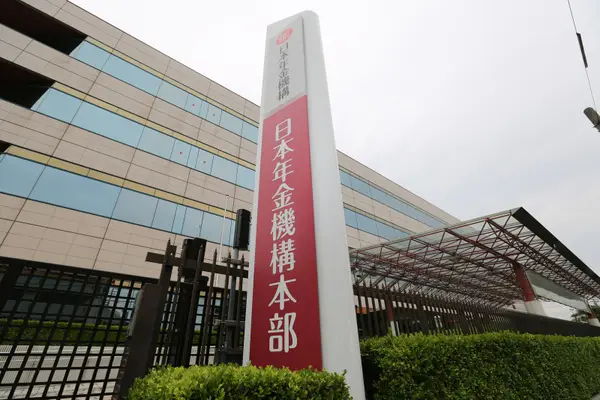We’ve helped more than 25,000 foreigners apply for Lump Sum Withdrawal Payments,
and in that time, we’ve seen people make many mistakes.
We will introduce you to seven reasons why your lump sum decision is delayed.
We hope this is a helpful resource if you decide to apply on your own.
Contents
- What Happens If Your Application is Incomplete
- If You Already Applied and Are Waiting For to Have It Paid
- 1. Simple Errors
- 2. Wrong / Incomplete Home Address
- 3. Wrong / Incomplete Bank Account
- 4. Existing Jumin-Hyo (Japanese home address)
- 5. You Are Still Part of a Japanese Pension Plan
- 6. Dual application
- 7. Just Unfortunate Delay
What Happens If Your Application is Incomplete
If your application is incomplete, the Japanese Pension Service (日本年金機構) will send you back your application forms with a document saying why your application wasn’t accepted.
In this case, the reviewing process will completely stop, and they won’t follow up with you.
So you should fix your application based on what they say and re-apply.
You should be careful and pay attention to detail as the Japanese Pension Service is strict.
Any application with minor errors will be turned down easily.
Also, you have to go to the back of the line if you re-apply.
Even with a complete application, It usually takes four to five months to review.
So it is important to get a complete application with no flaws when you first apply.
This will make your life a little easier.
If You Already Applied and Are Waiting For to Have It Paid
The lump sum payment date is every 15th, so just wait until the next 15th if you are waiting to have it paid.
Once JPS approves your application, they will send you a notification letter to your home address by airmail (or to your agency in Japan), then transfer your refund money to the bank account you specified.
So, if you get the notification letter, your money will be deposited into your bank account soon.

Now, I will tell you frequent errors and mistakes that applicants make on a lump sum application.
1. Simple Errors
Simple errors are like spelling mistakes or wrong numbers such as nenkin number and bank account details.
JPS will send you back your application form if they find even the smallest mistake.
So please make sure you get them right.
Especially, pay attention to the right numbers. Put numbers in the Japanese way,
as they can be different from your countries. (like 7 and 0)
Also, make sure to write the alphabet clear and readable.
2. Wrong / Incomplete Home Address
There is a section for your new home address outside Japan on the application.
Make sure to put the complete one correctly here.
Suppose you put your old Japanese home address in this section. In this case, your application will be turned down and sent back to you because anyone who owns a Japanese home address can’t apply for a lump-sum.
If your application is incomplete, JPS will send it back to you with a letter by postal mail to the address you put in this section.
Please make sure you write a complete and correct address.
Without a correct address, you’ll never know whether your application was accepted or not, or if you have to re-apply.
If you have an agency like us, it will be sent to your agency’s address.
3. Wrong / Incomplete Bank Account
We see errors regarding bank account details a lot.
Please put the correct bank name, branch name, and bank account number.
It might be even better if you could put a SWIFT code so that they can specify the branch that you use.
Also, the account holder’s name and the name that you put in the applicant’s name in the application must match.
If you put the wrong bank details on your application form, they will send it back to you and ask you to re-apply with another bank details of a different bank.
Please note that JPS can’t transfer money to certain banks, like a major Vietnam bank.
JPS used to transfer to this bank but no longer accepts it because of many cases of transmission error.
Many people write account details in their country, but you can also have it paid in Japanese banks. However, JPS won’t transfer your refund into Yucho.
Many of you must have a Yucho bank account because that is the bank foreigners can open their account relatively easily.
So please remember you can’t have your refund deposited into a Yucho bank account.

4. Existing Jumin-Hyo (Japanese home address)
One of the requirements for receiving a lump-sum is “you do not have an address in Japan.”
However, some people forget to delete their resident certification, jumin hyo (住民票).
In other words, they fail to inform their municipality that they are leaving Japan and to file moving-out-to-overseas notification, kaigai (kokugai) tenshutsu todoke (海外 or 国外転出届).
This happens a lot.
JPS checks whether you are in Japan or not by using the government’s database called residency registry network (Juki-neto).
If they see your jumin-hyo on it, they treat you as a residency.
To solve this issue, you have to file kaigai (kokugai) tenshutsu todoke to the Japanese municipality from where you currently live, which can be tricky if you don’t have someone to help you in Japan. Please make sure to do it before you leave Japan.
It’s even better to get tenshutsu shomei sho (転出証明書); the document proves that you left the municipality.
Also, some people leave their Japanese address alive because they plan to come back to Japan shortly. In this case, of course, JPS won’t accept your application.
Please apply for a lump sum when you leave Japan for good.
Please note that even If you forget to file kaigai (kokugai) tenshutsu todoke, your home address in Japan will be deleted by the government after your visa expires based on nyu-kan’s decision. In that case, you are able to apply for a lump-sum.
5. You Are Still Part of a Japanese Pension Plan
You must not be paying pension insurance anymore to apply for a lump sum.
However, in some cases, some people remain in the Japanese Pension Plan for some reason.
It sounds weird but happens for real.
One of the reasons this happens is that the company you worked for messed up when you left them.
Usually, your company will remove you from the employee’s pension and health insurance plan when you leave the company.
But, some companies forget to do this which causes you to remain in the nenkin system.
To prevent this situation, it would be better to get a copy of the certificate of losing qualification for social health insurance (社会保険喪失届) from your company and attach it to your lump sum application.
Another case is that you are automatically enrolled in a national pension plan.
This rarely happens to those who stayed in Japan for a month or two after leaving their company.
The government enrolls you in a national pension plan (instead of employee pension) if you still live in the country after leaving the company because anyone older than 20-year-old residing in Japan must enroll in a Japanese pension plan.
Unfortunately, this is difficult to prevent in advance. In many cases, you will find out after applying for your lump sum refund.
If you’re unsure, you should check whether you are in a national pension plan or not when you file kaigai (kokugai)-tenshutsu-todoke at your city office if you stay in the country for more than a month after leaving your work.

6. Dual application
It usually takes about five months for JPS to review.
You may be a little anxious until you hear from them, but trust us: be patient.
Some people apply for a lump sum again after applying for it because different agencies tell you things like “we can have it paid quicker.”
Also, some people change bank account details or send additional documents after they have already applied.
This is a bad idea.
JPS starts a review on a first-come-first-served basis, and If they get two applications from the same person, they will be confused.
Suppose the two applications are sent to two different agencies.
JPS will send you a letter confirming the right agency between the two.
Also, if you want to change application details, it is highly likely they will send back your application. In that case, you have to re-apply, and you will be the last person in the line.
So it is wise just to wait patiently after submitting your application.
7. Just Unfortunate Delay
In sporadic cases, even if you submit a complete application with no flaws, the review takes a lot of time for reasons out of your control.
We had a case where we were told “the applicant has a home address in japan” even though the applicant did file kaigai (kokugai)-tenshutsu-todoke.
JPS rarely makes mistakes, but it can happen.
Unfortunately, all you can do is just wait if it happens to you. They get tons of applications, and a few people have just bad luck. It is a black box once you apply.
The reasons we introduced are just a few examples.
We witnessed all kinds of mistakes.
If your application is incomplete or has issues, it takes more than it should be to get your nenkin refund to be paid.
Japanese nenkin experts like us can check everything and apply with no flaws.
We are here to help you. Please feel free to contact us.

